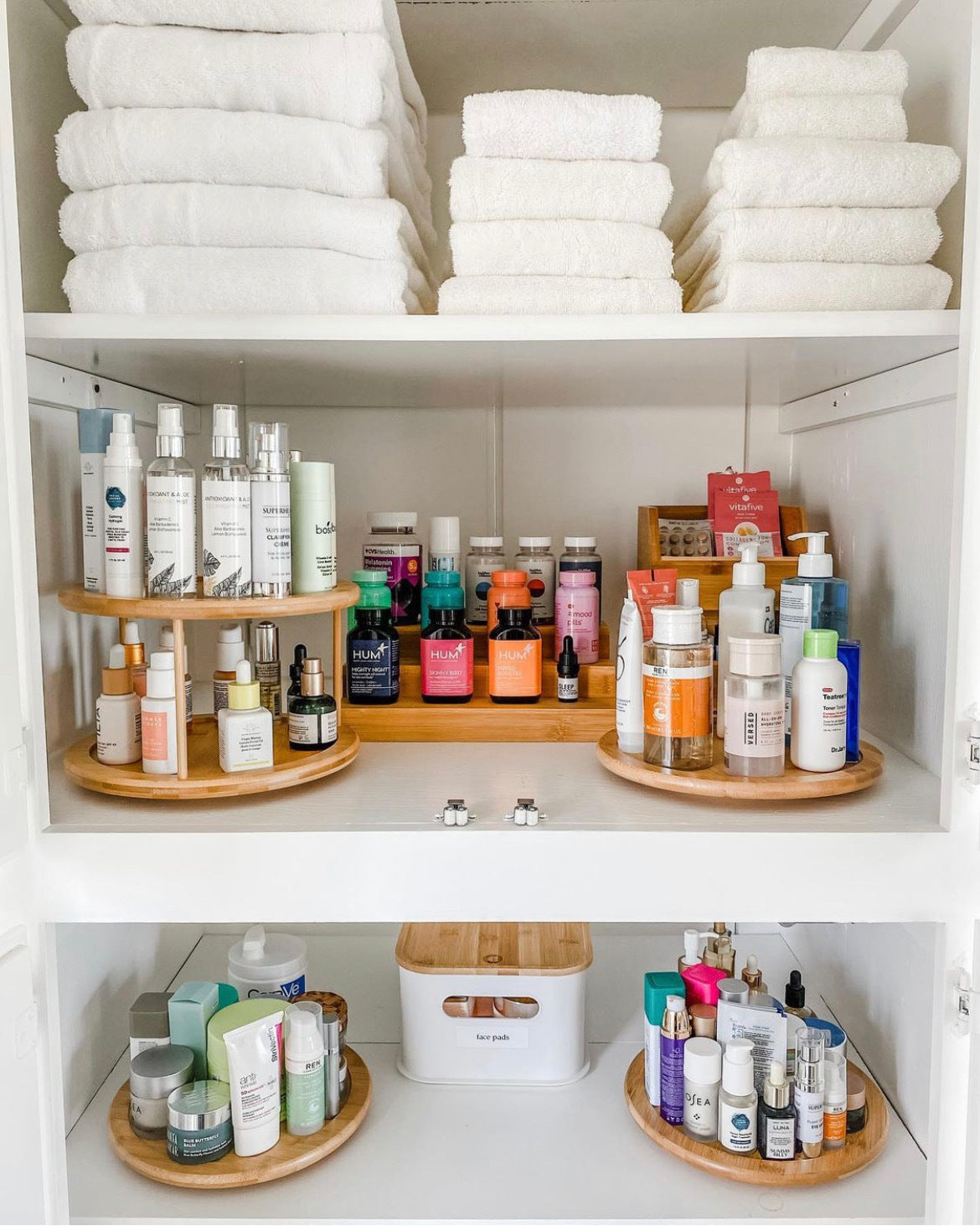Throwing Out Old Make Up

What Happens to Old Makeup?
Once a beauty product is exposed to air the timeline starts on its shelf-life. Products will naturally begin to oxidize and degrade. In general, most beauty products are made to last from 1-3 years. Products filled with synthetic chemical preservatives will last the longest vs. more natural products that are using natural preservatives like grapefruit extract, etc. In general, powder products like eyeshadows, bronzers, blush, powder foundations, etc are more durable than liquid products like mascaras, liquid eyeliners, liquid foundations.
As these products begin to age they may change in texture and consistency. Liquid foundations may not apply as smoothly, powders may become chalky or crumbly. More concerning effects of deterioration are the contamination of yeast, fungal or bacterial growth. The presence of any one of these can often counteract any preservatives present and cause the product to go rancid much quicker.
Furthermore, every time you physically touch your makeup you transfer germs into the product and from their your face. These germs can then easily multiple in hot or humid environments. Although many keep their beauty products in the bathroom for convenience, this is one of the areas of a home with the highest levels of airborne bacteria, which can easily contaminate products.
Consider storing products in a cool linen closet or drawer in your bedroom and always, ALWAYS wash hands thoroughly before touching products directly with hands.

What are the Effects of Expired or Infected Products
Although not harmful to your health, aging products may become more difficult to apply or blend. They may not last as long after application or may not apply as smoothly. More concerning possibilities are eye and skin infections, rashes, perioral dermatitis and acne breakouts.
When to Throw Out Makeup Products:
- Every season: Toss your mascara and liquid liner
- Every six months: Toss your skin-care regimen, sunscreens, and liquid foundation
- Every year: Toss your hair products (except hairspray)
- Every two years: Toss your powder-based cosmetics (such as pressed powder and shadows), lipsticks, and nail polishes
If, at any time, you notice a change in texture or consistency, a thin watery layer appears on any surface, or the product begins to smell differently you should discard or try and return the product immediately.
Clearing Out Toxic Products

Skincare products tend to be used more frequently than make-up and are less likely to make it to their expiration date. Nevertheless, if you have any face cleansers, moisturizers, serums, shampoos, body wash, etc that have lasted more than two years you should definitely consider throwing them out and starting fresh.
Our biggest concern with skincare products is more focused on the toxic chemicals present in SO many commonly used brands. Synthetic preservatives, emulsifiers, and other toxic chemicals can wreak havoc not just on our skin, but our entire bodies! Below is a list of harmful ingredients that you should avoid at all costs.
Toxic Ingredients to Avoid:
- Talc
- MEA, DEA, TEA
- MIT, CMIT
- Toluene
- Triclosan
- Paraffins
- Parabens
- Phthalates
- Sodium Lauryl Sulfate
- Propylene Glycol
- Formaldehyde & Formaldehyde-Releasing Preservatives
- Benzophenones
- Lanolin
At Facial Lounge we are 100% committed to providing the cleanest and most effective solutions by creating products that are organic, vegan, gluten-free, PETA-certified, and free of all harsh/harmful chemicals!



Leave a comment